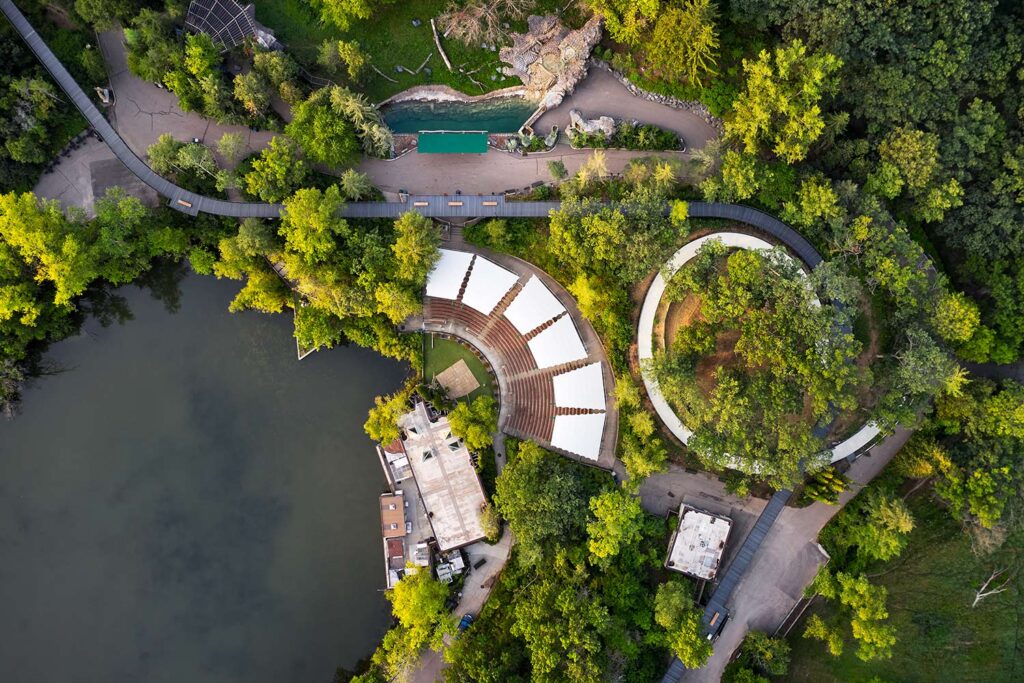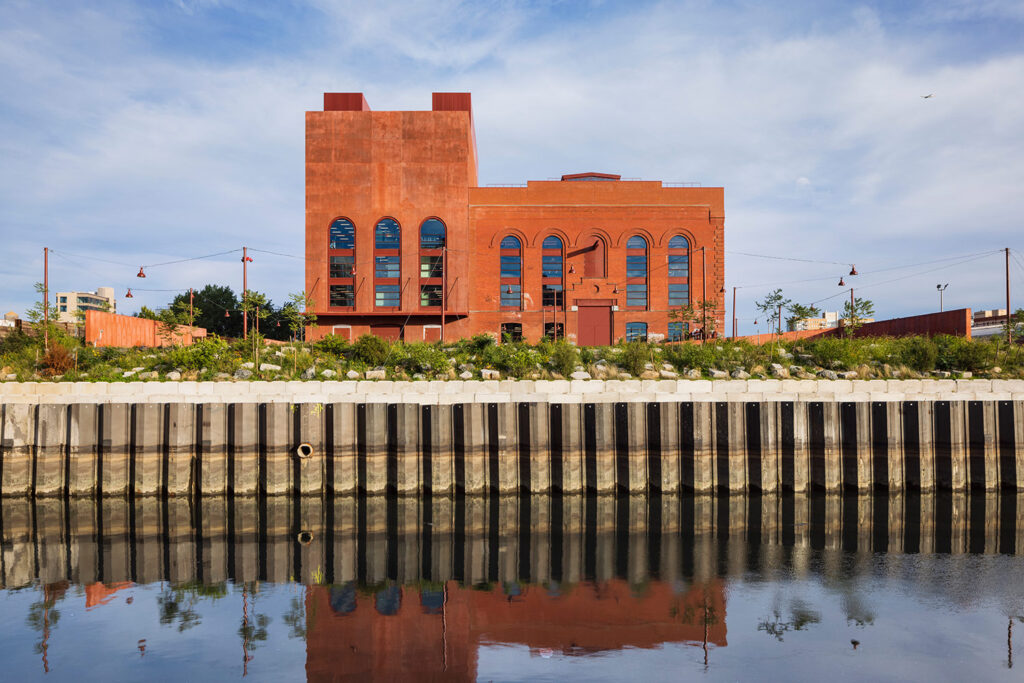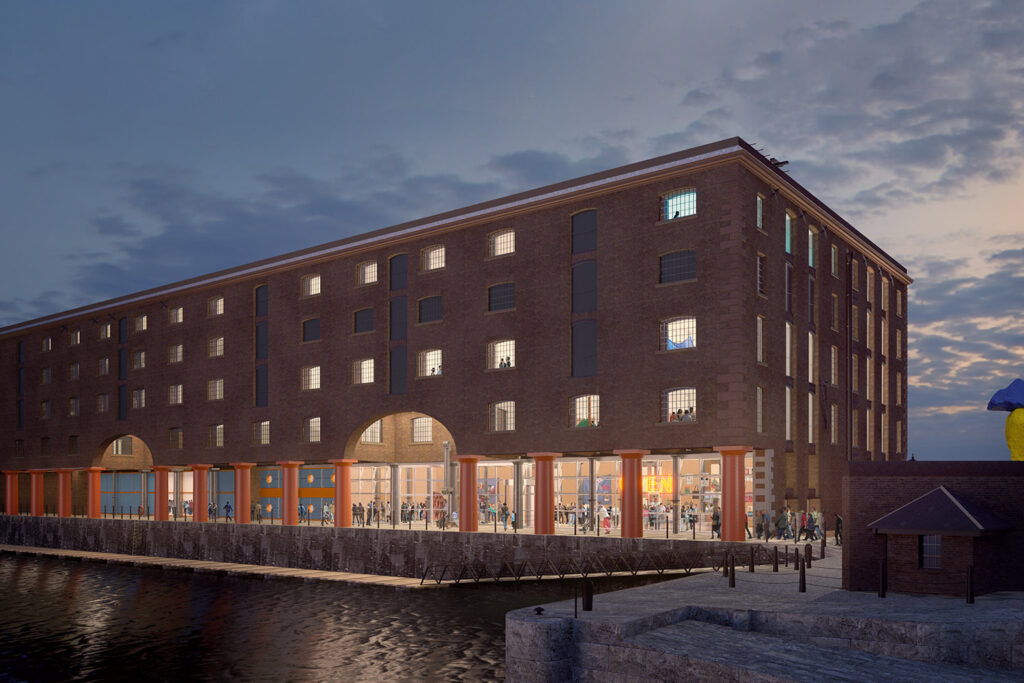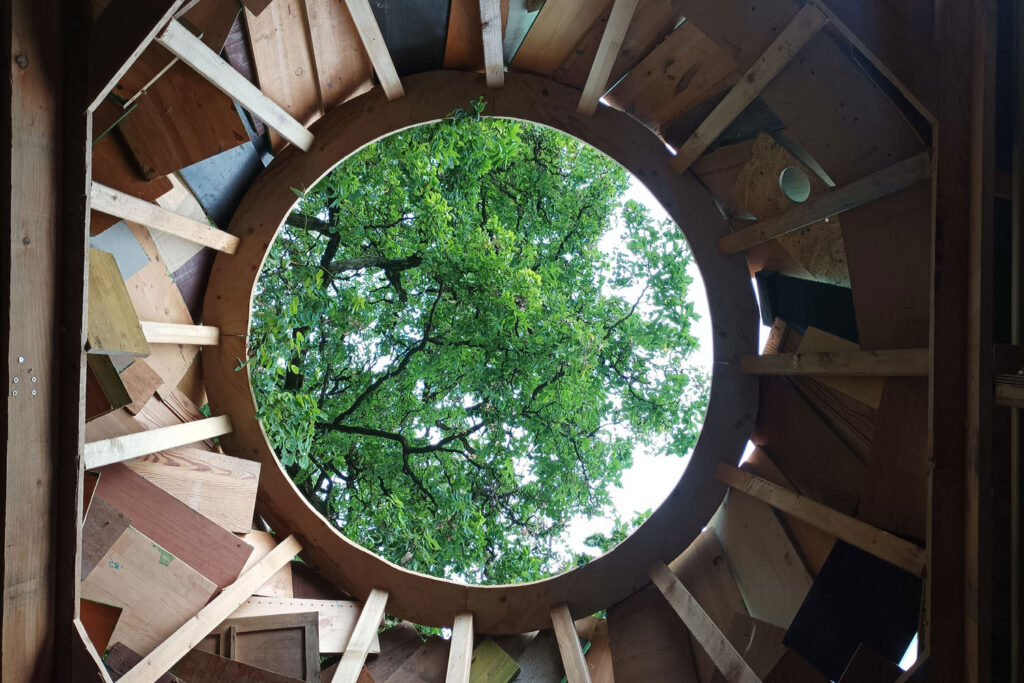
A masterpiece in gridshell engineering
The Weald and Downland Gridshell
Chichester, UK
Project details
Client
Weald & Downland Open Air Museum
Architect
Edward Cullinan Architects
Duration
Completed in 2002
Services provided by Buro Happold
The Weald and Downland Gridshell, is a timber gridshell structure constructed of green oak, using innovative and traditional building techniques.
Designed to host a collection of 15th to 19th century buildings, the gridshell contributes to the wider Weald and Downland Living Museum experience while providing an insight into the history of rural life in the south of England.
It has been designated by the UK Government for the pre-eminence of its collections and its building restoration work and was financially supported by the Heritage Lottery Fund.
Set amid the forest, this purpose built structure is organised over two storeys and is supported by a sunken concrete storage facility. The top level comprises a huge, airy, wooden gridshell workshop, which facilitates the study and practice of long-establish crafts and construction methods, no longer widely taught in the industry.
Challenge
Although the client initially had a less ambitious project in mind they required a space that enabled them to lay out and restore parts of old houses, as well as display and store artefacts previously hidden away offsite. The final design requirements resulted in a remarkable combination of 21st century design and traditional, at times unique, building techniques.
The design and construction phases involved a collaborative approach between key stakeholders including; local carpenters and boat builders, museum staff, architects and our expert structural and MEP engineers.
One of the most challenging aspects of the build involved working with green timber, this was aided by the weather which remained wet throughout construction. This helped ensure the moisture content of the wood remained high, maintaining its pliability during the construction process.

Solution
This interactive process of computer analysis aims to solve a set of nonlinear equations, a technique that is also used for the modelling and analysis of tensile structures.
Shaped into a giant peanut shell form, the undulating structure is an impressive 50 metres long, 12 metres wide and 10 metres high. The gridshell is based on straight lines that are criss-crossed and twisted to form a rotating grid plane. To achieve this unique outcome the team applied new techniques developed especially for this project.
Polycarbonate ‘windows’ were specified instead of glass, which was not considered flexible or safe enough to accommodate the natural expansion and contraction of wood throughout the day. Another key element in the gridshell’s construction were the node clamps, these metal coupling plates ensured the long oak pieces remain in place while allowing them to rotate and distort, by bending and lifting, to form the three-dimensional ‘grid’ structure. Finally, the building was clad in locally grown red cedar ensuring its sensitive integration with the surrounding rural environment.
Value
The Downland Gridshell provides an ideal space for the public to view the museum’s collection while championing the preservation of traditional timber construction techniques and craftsmanship. The first of its kind in the UK, this highly unique building was one of only five such structures in the world when completed. In 2002 it was shortlisted for the Stirling Prize, cementing its position as one of the world’s premier examples of gridshell construction.
Awards
2002
RIBA Regional Architecture Award
2003
Runner-up for the RIBA Stirling Prize
2003
IStructE David Alsop Commendation
2002
British Construction Industry Awards: Winner of the Small Project category
2003
American Institute of Architects, Excellence in Design Award
2003
Wood Awards 2003: Gold Award Winner










